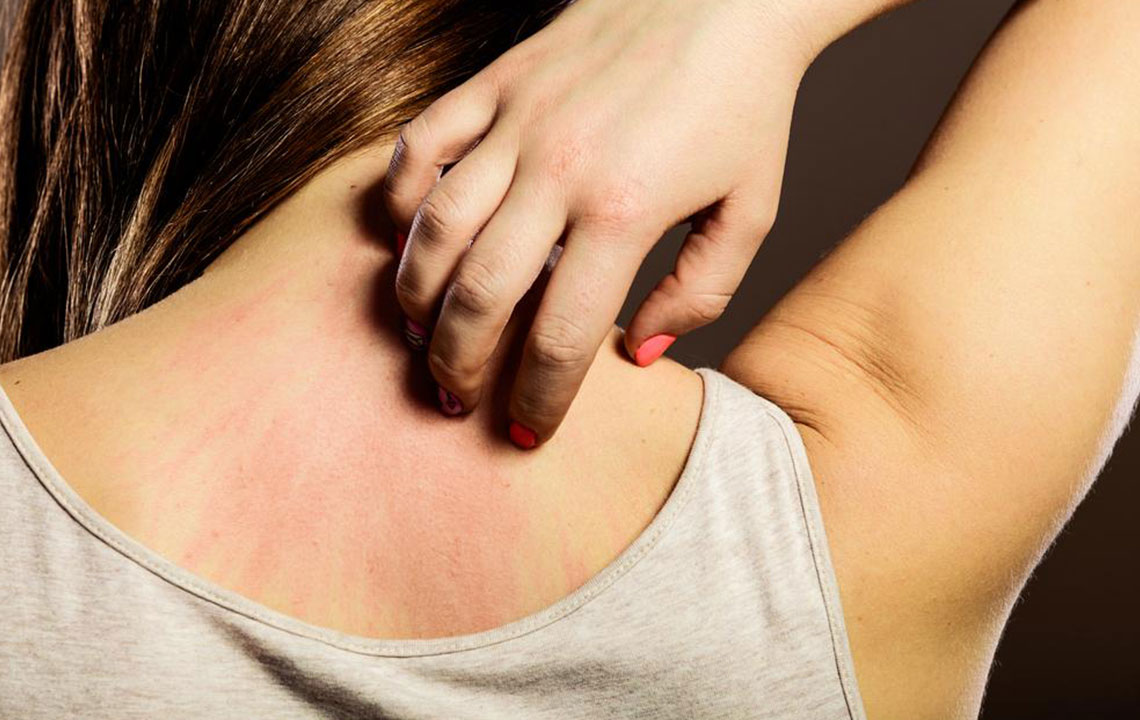Comprehensive Guide to Scabies: Symptoms, Transmission, and Treatment
This comprehensive guide explores everything you need to know about scabies, including its symptoms, appearance, transmission methods, and effective treatments. Recognizing the signs early and consulting healthcare professionals can prevent the spread and complicating factors. Visual references help in accurate identification, and prompt treatment ensures faster relief. Whether in crowded environments or at home, understanding scabies is essential for effective prevention and management, safeguarding your skin health and overall well-being.

Comprehensive Guide to Scabies: Symptoms, Transmission, and Treatment
Scabies is a highly contagious skin condition caused by microscopic mites that burrow beneath the skin, leading to intense itching, rashes, and skin irritation. Recognizing the signs and understanding how the infestation spreads are essential steps toward effective management and treatment. In this detailed guide, we delve into the key facts about scabies, including its symptoms, appearance, modes of transmission, and available treatment options. If you suspect you have scabies or want to learn more about this common yet often misunderstood skin condition, reading this article thoroughly will provide valuable insights.
Visual references, such as images of scabies rashes, significantly aid in identifying the condition accurately. Since early diagnosis and intervention are critical in preventing the infestation from worsening or spreading, knowing what to look for can make a substantial difference in outcomes. This guide aims to equip you with detailed knowledge to help you distinguish scabies from other skin issues and understand the necessary steps to seek medical care promptly.
At its core, scabies is caused by the mite Sarcoptes scabiei, which is so tiny that it is invisible to the naked eye. These microscopic parasites burrow into the upper layer of the skin, creating tunnels where they lay eggs. The body’s immune response to these eggs and mites results in the classic signs of infestation: intense itching, red bumps, blisters, and rashes. It’s especially important to differentiate scabies from other skin infections, as misdiagnosis can delay effective treatment and prolong discomfort.
The symptoms of scabies are not immediately apparent upon first exposure. It can take up to six weeks for symptoms to develop in individuals who have never been infected before. If you’ve had previous exposure and are re-infected, symptoms may appear sooner, often within a few days.
Key Symptoms of Scabies
Intense itching that worsens at night is a hallmark sign.
Rashes, which often appear as small, red bumps.
Burrow lines: thin, wavy, grayish or silvery streaks on the skin, sometimes with tiny black dots at their ends indicating mite activity.
Blisters, pustules, or crusted skin in severe cases.
Localized bumps and rashes commonly appear in skin folds, such as between fingers, around wrists, elbows, underarms, or groin areas.
It’s helpful to compare your skin changes with online images of scabies rashes. This comparison can assist you in recognizing features unique to this infestation. Avoid scratching to prevent secondary bacterial infections and minimize spread.
The itch associated with scabies is often relentless and particularly severe at night, which can disturb sleep and cause considerable discomfort. The burrows—created by female mites as they lay eggs—are most visible in fold areas of the skin, such as the webs of fingers, on the palms, inner elbows, around the waist, or genital regions. These burrows look like tiny, wavy tracks and may contain small black dots, representing the mites themselves.
Bumps and pustules may be visible along with the burrow tracks. Clusters of eggs and mites can create characteristic skin patterns that are recognizable through visual aids like photographs and diagrams available online. Being familiar with these signs enhances early identification and treatment accuracy.
How Does Scabies Spread?
Scabies is extremely contagious, spreading rapidly in crowded settings where close physical contact is common. Environments such as prisons, nursing homes, daycare centers, and families living in close quarters are particularly vulnerable to outbreaks. The primary mode of transmission is prolonged skin-to-skin contact with an infested individual, though indirect contact through shared clothing, bedding, or towels can also facilitate spread.
Anyone in contact with an infested person should be vigilant. Caregivers, healthcare workers, and household members are usually at higher risk due to their frequent exposure. Recognizing early symptoms and seeking prompt treatment is crucial to control the spread within communities.
If you experience persistent itching, especially alongside the appearance of rashes or burrow lines, consult a healthcare professional for an accurate diagnosis. Confirming scabies through clinical examination, microscopic skin tests, or skin scrapings allows for targeted therapy using prescribed topical medications, which are highly effective if administered correctly and promptly.
In severe or resistant cases, or in immunocompromised individuals, more intensive treatments might be necessary to eliminate the mites completely. It’s equally important to treat all close contacts simultaneously to prevent reinfestation. Proper hygiene, including washing bedding and clothing in hot water, can help eradicate the mites from contaminated items.
In conclusion, understanding the essential facts about scabies, from its appearance to its transmission and treatment, is vital for effective management. Early diagnosis and treatment not only relieve symptoms but also prevent outbreaks and reduce the risk of secondary infections. Be vigilant about skin changes, compare signs with images of scabies rashes, and seek medical advice without delay to ensure swift recovery and containment of the infestation.





